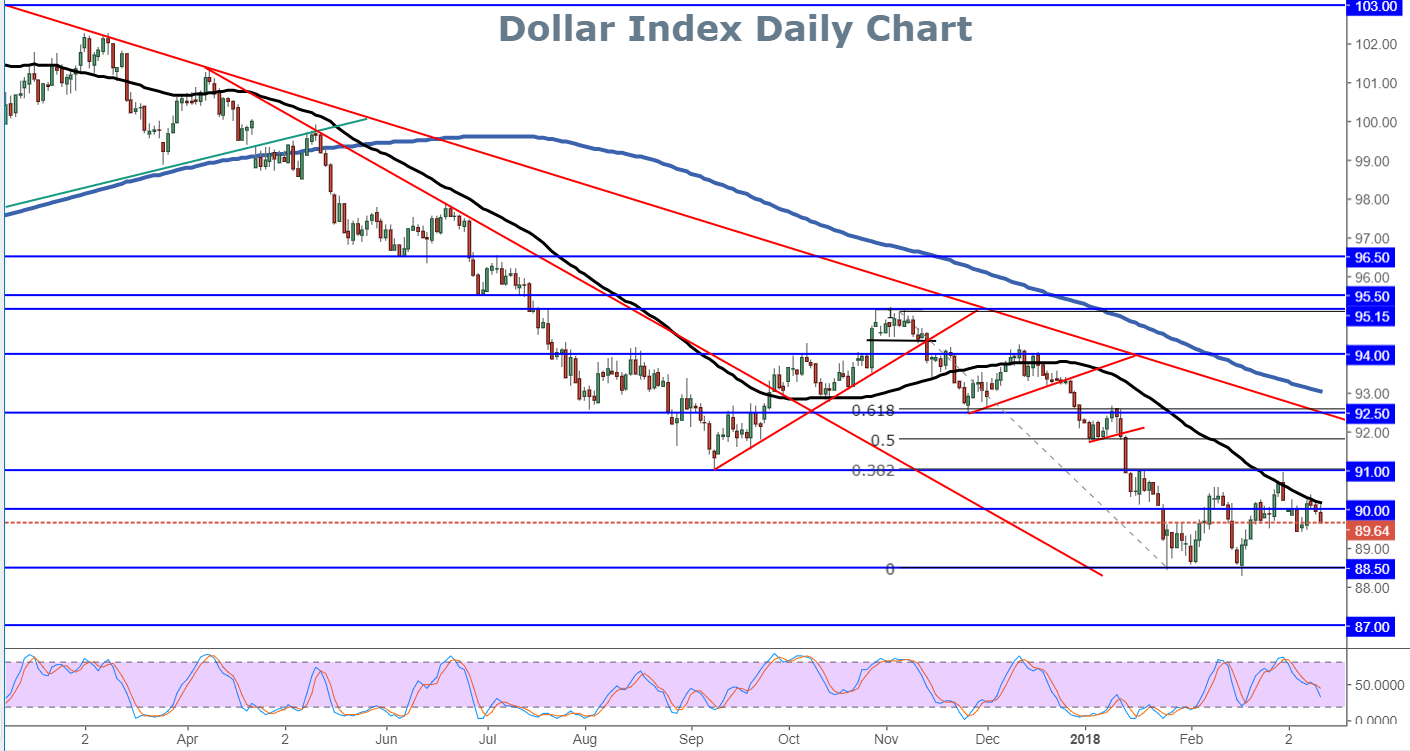Two primary developments on Tuesday led to a sharp fall for the already-struggling US dollar. First, the highly anticipated Consumer Price Index inflation data for February was released, and it helped corroborate last week’s weaker-than-expected wage growth figures. Though the CPI was precisely in-line with consensus expectations – February headline CPI at +0.2% after January’s higher-than-expected +0.5%, and February core CPI also at +0.2% after January’s higher-than-expected +0.3% – the lower inflation readings relative to the previous month decreased expectations that the Federal Reserve will need to raise interest rates faster than anticipated. While this relatively tepid inflation data initially boosted equity markets, the dollar was pressured by the prospect of potentially diminished urgency for higher interest rates. The Fed meets next week and is widely expected to raise interest rates then by 25 basis points, but the outlook for interest rates further into 2018 and beyond will be the main focus for markets.
Shortly after the CPI release on Tuesday, an announcement that US Secretary of State Rex Tillerson has been dismissed and will be replaced by current CIA Director Mike Pompeo pressured the US dollar even further. Aside from all the investor uncertainty that continues to be generated almost daily due to incessant market-moving surprises from the White House, this dollar pressure was exacerbated by the implications of President Trump’s replacement of Tillerson with Pompeo. The outgoing Secretary of State Tillerson has been seen as a moderating voice for US foreign policy that helped to serve as somewhat of a counterpoint to Trump’s impulsive and often abrasive attitude towards other countries. Pompeo, on the other hand, is well-known for his views that mirror Trump’s hardline stance on international political issues, including the Iran nuclear deal and North Korean regime change, and is seen as having a similar anti-globalist perspective. Much of the risk of this hardline stance for the US dollar lies in the high likelihood that the top US diplomat will be yet another staunch supporter of Trump’s protectionist trade policies.
Though the US dollar index pared some of its initial losses later in the day on Tuesday, pressure on the dollar remained heavy. The index is not too far off from its mid-February multi-year low of 88.25, and is currently following a continuing downtrend outlined by its descending 50-day moving average. Both long-term and short-term trends continue to point to the downside for the weak dollar. Wednesday features more US inflation data in the form of the Producer Price Index. With any further signs of soft inflation and/or threats to global trade stability, the dollar index is potentially poised to fall once again towards its key 88.50 support area.





